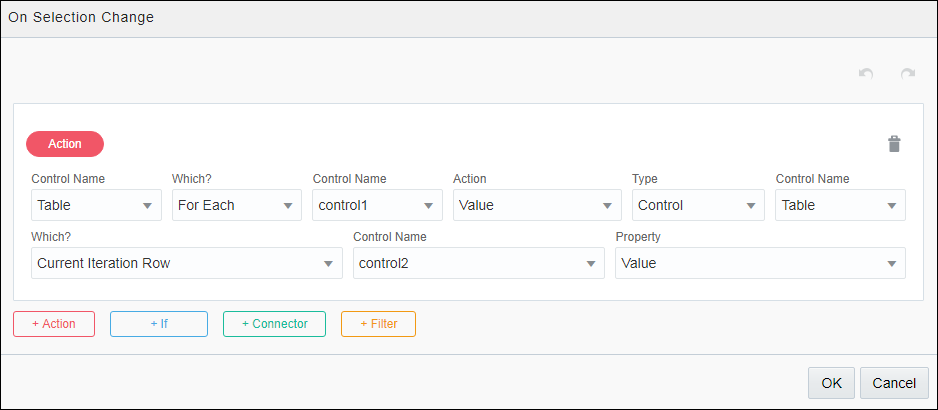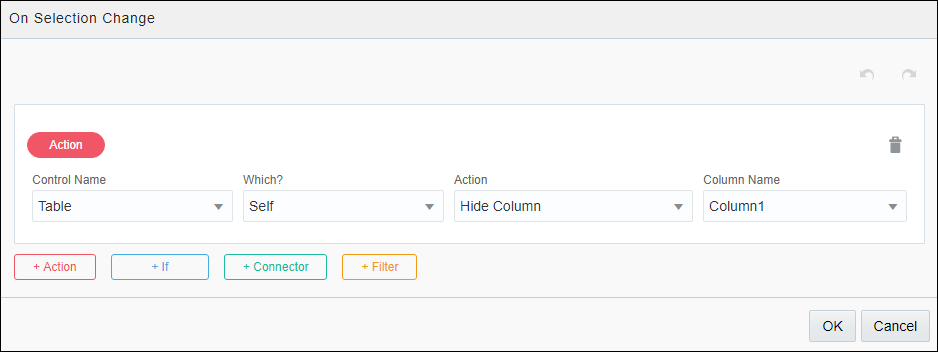Configure Tables
Use table controls to group multiple controls in a grid pattern into your form. You can use table controls to create dynamic content for your form.
Some Useful Event Actions for Tables
This section lists a few useful actions that you can apply to a table through the event window. To create an event action, see Specify Actions.
-
To retrieve a value from another control and apply it to each row of the table, use the For Each option under the Which? field.
-
In a table with two columns, to copy values from one column to another (for each row) on occurrence of an event, use the For Each option along with an additional option called Current Iteration Row that is available to choose the value source. The Current Iteration Row option allows you to retrieve the value from one cell of a row and apply to another cell in the same row. The following figure shows an event action configuration for a table with two columns. The value of control2 (the control in table column 2) is copied into control1 (the control in table column 1) for each row of the table on occurrence of the specified event:
-
To hide a column within a table on occurrence of an event, select Self under the Which? field, choose Hide Column under Action, and specify the column to hide. The following figure shows an event action configuration to hide a table column:
-
Similarly, to show a previously hidden column—hidden either through Properties pane’s General tab or through an event action, select Self under the Which? field, choose Show Column under Action, and specify the column to show.

